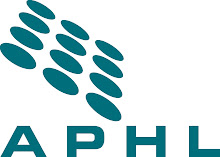Friday, February 19, 2010
Safety First
Last month I had the privilege of observing the Emory University Southeast Regional Center of Excellence for Emerging Infections and Biodefense (SERCEB) BSL3 Science and Safety course, with the purpose of gaining a better understanding of how this program addresses the needs of biosafety professionals and laboratorians.
Instructor Sean Kaufman and his team offer an innovative teaching environment, utilizing a combination of lectures and interactive discussions coupled with a focus on and acknowledgement of behavioral aspects that may impact biosafety environments.
A mock scenario: You are suited up in a high-containment laboratory, working under the hood with a select agent. Fire alarms sound. React. The room shakes. React. The power goes out. React. The route to safety is obstructed. React. Your colleague has fallen to the floor. React again. Repeat.
This insertion of “noise” into a once familiar environment followed by candid feedback on how to consciously respond in panic situations serves as a compelling mechanism of provoking behavioral responses. Drills, performed in conditions both routine and threatening, reinforce to participants the importance of safeguarding the integrity of their secure environment as well as the agents with which they work.
I was extremely impressed by this course, which succeeds in making difficult and cumbersome material interactive by engaging participants. Training activities such as this course are vital tools to prepare laboratorians to safely work with and contain dangerous pathogens.
Wednesday, February 17, 2010
Yet Another Multi-state Salmonella Outbreak Proves Need for PulseNet
Coming on the heels of several high-profile, multi-state outbreaks involving everything from spinach to peanut butter, the latest incident raises questions about the safety of the food supply.
A quick review of the current outbreak reveals several trends.
1) The outbreak involves a collection of food items: about two dozen different ready-to-eat salami products. (Recall that a 2008-2009 Salmonella outbreak was linked to more than 400 different peanut-butter-containing foods).
2) The volume of products recalled is immense: more than 1.25 million pounds of meat.
3) The suspected source of the bacterium is an imported food item: the black pepper used to flavor the salami products.
In short, the food chain has become increasing convoluted and global in nature. Foods travel farther distances to reach consumers, and one product may contain ingredients sourced from several distinct producers (who may be based in the US or abroad, potentially in countries with more lax food safety regulations than the US). All of these factors increase the risk for contamination.
While APHL has no formal role in preventing food contamination, the association has played a pivotal role in detecting it so fewer people suffer illness. Laboratory-based surveillance—using the APHL/CDC PulseNet system—enables outbreaks to be identified much more swiftly than would otherwise be the case (including the ongoing salami-related outbreak), and undoubtedly detects small outbreaks that would otherwise go unnoticed. In the absence of more stringent food-safety regulations, PulseNet offers some assurance that tainted food products will be brought to the attention of state and federal authorities. In fact, the PulseNet system has proven so effective that there has been great interest in expanding it internationally.
APHL has also provided substantive input into the Guidelines for Foodborne Disease Outbreak Response recently released by the Council to Improve Foodborne Outbreak Response. These guidelines are important because they provide a model and benchmarks for the kind of multi-disciplinary and multi-agency collaboration essential to contain an outbreak. The recent Salmonella outbreak, for example, involves ingredients regulated by two different federal agencies: the USDA, which regulates meat, and the FDA, which regulates pepper.
Tuesday, February 16, 2010
APHL Working to Ensure Power for Laboratory Services in Haiti
When the electrical grid comes back on-line in Haiti, the country’s laboratory system will be able to ramp up services quickly thanks to measures put in place before the magnitude 7.0 temblor January 12.
Even before the devastating earthquake, electrical power in Haiti was unreliable, with routine outages and serious voltage and frequency variations that compromised laboratory testing. Outages can lead to the loss of valuable testing reagents that must be stored at controlled temperatures, while “dirty power” is damaging to a wide range of laboratory equipment, including instruments used for diagnostic testing to support antiretroviral treatment for HIV-infected patients.
With funding from CDC’s Global AIDS Program and funding and technical assistance from the US Agency for International Development, APHL invested in site-specific technologies to improve the quality of the power received from the electric grid and provide continuous power during grid power outages. The core technologies include uninterruptible power supplies, generator back-up power with automatic transfer switches and no-contact inverter battery systems.
In addition, APHL has provided on-site maintenance and supervisory support visits with two-person teams comprised of one laboratory technologist and one service technician that travel to 16 supported sites throughout the country. Thankfully, Haiti’s national public health laboratory, the Laboratoire National de Santé Publique in Port-au-Prince, remains standing in the aftermath of the earthquake.
Although the massive relief effort has consumed all the country’s resources—with surviving laboratory staff understandably focusing on their homes and families—APHL is hopeful that conditions will improve enough to enable public health testing to resume in the not too distant future. At that point, the electrical support infrastructure will be a valuable help.




